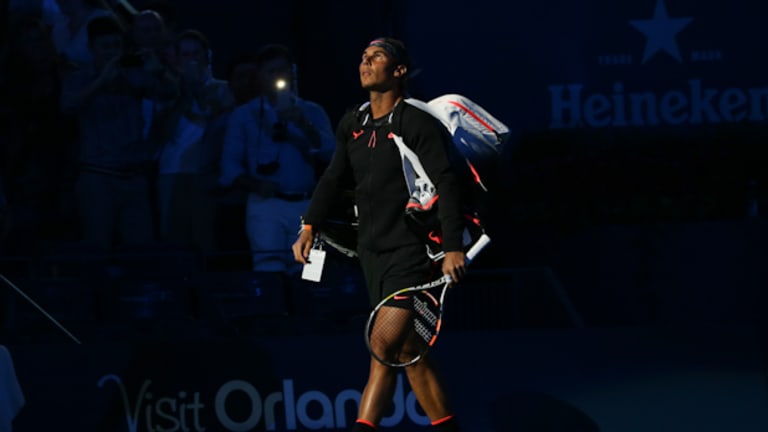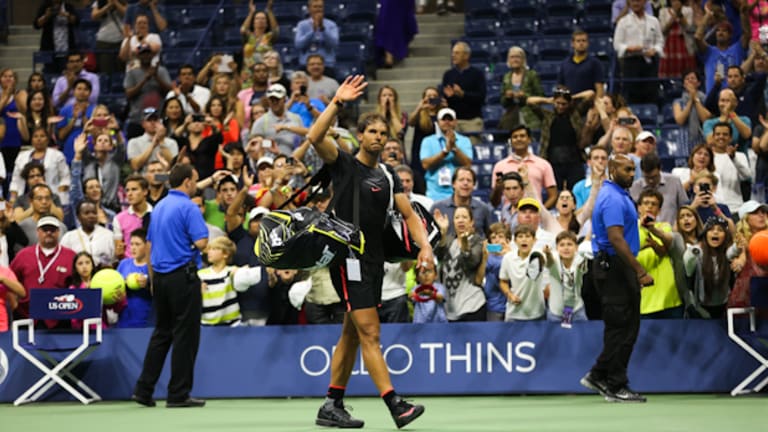Given the year Rafael Nadal has had, his great rival and friend Roger Federer did him an enormous favor in the second half of 2015. Toting a gleaming new SABR as the centerpiece of his re-tooled offense, Federer stole all the headlines. This was a great gift from the 17-time Grand Slam singles champion, because the headlines Nadal would have generated in and around the U.S. Open would have been ugly. Dispiriting. Soul-crushing.
It was a remarkably quiet if anxiety-laden U.S. Open for Nadal, his relative anonymity aided by the fact that he was ousted in the third round. Once, his nemesis was Novak Djokovic. Now it is Fabio Fognini. How far the mighty hath fallen.
It was easy to forget, enthralled was we all were by the handiwork of Djokovic, the eventual champion, and the sizzle of Federer, the runner-up, that Nadal is in deep trouble. The best spin you can put on it is that, for once, Nadal enters the fall season in reasonable health, not over-tennised. He’s still ranked No. 7, and with a strong finish he could move up considerably higher.
But don’t bet on it. Nadal hasn’t won a Masters title in the fall since 2005, back when Madrid was held indoors. And even at the very peak of his powers, Nadal has underwhelmed at the ATP’s annual year-end championships. His failure to win that title remains the single, glaring hole in his resume.
Even Nadal’s rivals have tried to bolster his floundering confidence. Shortly before Djokovic began his U.S. Open campaign, he spoke about Nadal to the press: “I’m sure he is really motivated to win the U.S. Open. He always has a chance. You can’t sign Nadal out, 14-time Grand Slam champion, he deserves [to be] a favorite.”

